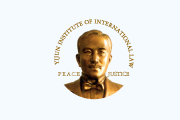The Committee against Research Ethics Violation Report
Journal of East Asia & International Law
A. Subject of Examination
Shun-liang Hsu, “Border Enforcement of Plant Variety Rights: A Comparison between
Japan and Taiwan” published at Volume 5, Number 1 (May 2012) of Journal of East Asia
& International Law.
The author is alleged to have committed the following violation:
Chart 1 and Chart 2 of the paper concerned on page 150 and 151, respectively, are essentially
the same as Figure 4 (圖4) and Figure 5 (圖5) on page 62 and 63, respectively, of the
unpublished master’s thesis written under the author’s supervision. These sources were
originally attributed to Figure 4 to the slide of a Japanese expert, 高橋信慶, in footnote
206, and attributed the source of Figure 5 to the website of Japanese customs in footnote
208, the author of the paper did not attribute the source either to the student work, the
Japanese expert’s slide, or the website of Japanese customs.
B. The Process of the Examination
1. The Journal instantly informed its procedures according to its Ethical Rules and its Detailed
Regulations to the informant and Thomson Reuters Co. via email as soon as receiving the
notification regarding the suspected violation of research ethics by the author on July 24, 2013.
2. An independent Committee against Research Ethics Violation (hereinafter The Committee)
was instantly organized for the purpose of conducting a thorough examination and deciding
the type of violation alleged in the article concerned on July 25, 2013. The Committee was
composed of five(5) experts including one highly renowned copyright lawyer and one
Taiwanese editorial staff.
3. The Committee requested the informant a PDF file of the original master’s thesis on July 25,
2013. The Journal received the file on July 30, 2013.
4. The Committee notified the procedure to the author and provided a chance to defend
himself. The author advocated his positions against the suspected violation via email with four
relevant evidences on July 28, 2013.
5. The Committee very carefully examined the type of the violation and the proper sanction.
After fairly, independently and scientifically hearing and exchanging the opinions of the
members, the Committee including a copyright lawyer has made the final decision under the
Ethical Rules of the Journal and its Detailed Regulation as well as the common standards of
globally recognized journals.
C. The Final Result
1. Type of violation
The two charts in the paper concerned are cited without correct sources, which constitutes
<Citation Errors> in accordance with Article 2, Paragraph 8 of the Detailed Regulations to the
Ethical Rule of the Journal of East Asia and International Law (hereinafter referred to as the
“RULE”).
2. Grounds of Decision
For more careful examination, the committee also referred a guideline established by the
Council of Writing Program Administrators (hereinafter referred to as the “CWPA”) to decide
whether the case at issue should be regarded as plagiarism or mere “misuse of sources.” The
CWPA guideline defines plagiarism as an ethical violation that:
“……occurs when a writer deliberately uses someone else’s language, ideas, or other
original (not common-knowledge) material without acknowledging its source.”
In the case at issue, the author borrowed two charts from a published material without
acknowledging their sources. If the author had “deliberately” used the charts, and if these
materials are not common knowledge in the academic community, then we could have
concluded that the author violated the RULE and his work labeled as plagiarism.
Based on the allegation of facts, however, we could NOT conclude that the author
DELIBERATELY copied the original work without giving credit to it. NOR we could conclude
that the charts copied are UNCOMMON in the academic community. Rather the contents
described by the two charts are fairly general and show a formal procedure, thereby can be
similarly drawn by anyone who correctly understands the flow. Furthermore, the academic
significance of the two charts throughout the entire paper is minor.
D. Sanctions
According to the RULE and its Detailed Regulations, Citation Errors will be a violation of
research ethics. Thus, the following sanctions will be imposed on the author.
1. Partial Retraction
The Journal will ask Thomson Reuters, Elsevier and other relevant academic database
companies to retract the two charts from their databases including Web of Science, SCOPUS,
etc.
2. Notice
Journal of East Asia and International Law will notify this through its <Notice of Research
Ethics Violation> at Volume 6, Number 2.
3. Prohibition of Publication for the Next Five Years
The author shall not be considered by the editorial board for possible publications for the next
five years.
4. Notification to the Author’s Institution
The Journal will officially notify all the results to the author's institution and request for take
necessary and appropriate measures according to the ethics regulation of the institution.
| 번호 | 제목 | 닉네임 | 조회 | 등록일 |
|---|---|---|---|---|
| 9 | SSRN Top Ten listed Paper by Shucheng Wang | 이준국제법 |
5627 | 2017-07-20 |
| 8 | Prof. Michael Sheng-ti Gau & Prof. Xin Jun Zhang on CCTV | 이준국제법 |
4385 | 2014-05-13 |
| 7 | Issue Focus Topic of Volume 8 Number 1 Global Responsibility of TNCs | 이준국제법 |
14408 | 2014-03-30 |
| 6 | DOI | 이준국제법 |
389579 | 2013-11-23 |
| 5 | [Erratum] Volume 6, Number 1 | 이준국제법 |
29633 | 2013-11-23 |
| 4 | [Erratum] Volume 1, Number 2 | 이준국제법 |
15215 | 2013-11-23 |
 |
[Notice] Research Ethics Violation | 관리자 |
66152 | 2013-11-21 |
| 2 |
[Tribute] Ambassador Chusei Yamada
|
관리자 |
11138 | 2013-09-30 |
| 1 |
[Wedding] Mr. Patthara Limsira
|
관리자 |
8484 | 2013-09-23 |






